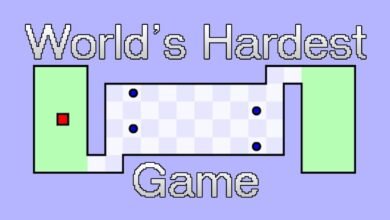Sonic Coloring Games: Fun & Academic Experience for All Ages

Sonic coloring games have become a popular and fun form of entertainment and pastime for people of all ages worldwide. Throughout their execution, they are workable in keeping both gaiety and attention alive. The interactivity of these two is the main component of this type of activity. When the users color the sheets, the sound changes according to the colors or musical tones that are chosen. This physical and auditory action generates a multisensory experience that will be fun and educational for people.
What Are Sonic Coloring Games?
Sonic coloring games are electronic products that allow the player to color images with auditory feedback. The game’s progress consists of three principal activities: color coding, hearing the alphabet, and mastering the skills of reading fluently. To this effect, the color and the sound combine to create a more engaging and entertaining activity that can be very educational.
The Origins of Sonic Coloring Games
The genius of humanity and its ability to think, create, and innovate have given birth to the concept of sonic coloring games. Modern technologies and the innovations made in the design and functionalities of touchscreen devices gave the developers the idea to supplement the coloring materials with an additional auditory component. Such improvements have resulted in developing a completely new group of flexible games for all users, from school-age children to adults taking downtime and being creative.
The Benefits of Sonic Coloring Games
The following list includes various advantages of Sonic coloring games for various age groups. Apart from being fun, they contain educational and therapeutic aspects. The main advantage of Sonic games is that they encourage creativity and artistic freedom among their users.
Supplying Creativity and Artistic Expression
Sonic coloring games are fun and a great exercise for children to practice creativity. Users can instantly try different color combinations and patterns while evaluating their hearing responses to aspects. This motion of check-out then helps the user seek and build a unique side of themselves artistically.
Enhancing the Coordination of Hand-Eye
Coloring within the boundaries of digital artwork improves hand-eye coordination. Many games in this category involve precise motions, making these stations effective for letting young children build their fine motor skills.

Careful Support for You to Gain Relaxation and Stress Relief
Many grownups find Sonic Coloring Games a feature that helps them relax and relieve some stress. The interaction of colors with the music can be compared with meditation, so it becomes a relaxation technique that can be used at the end of the day as well as during anxiety times.
-
Promoting the Educational Process
I have always found Sonic coloring games to be academic as well as recreational. These games can teach color differentiation, shapes, and even musical notes. Some also come with educational elements, such as historical figure representations or scientific facts, making learning fun and interactive.
-
Popular Types of Sonic Coloring Games
Sonic coloring games are different, and thus, each offers a unique experience. There are many Sonic coloring games to choose from, which are suitable for different ages and preferences.
-
Character-Based Coloring Games
Treaty-themed coloring games are indeed quite a hit among children. The orders given in character coloring game applications are full of music, and at the same time, the characters become alive through the different colors the users give them.
-
Musical Instrument Coloring Games
One musical support is the sound composition of the different instruments applied to coloring, integrated with links to their sound and function. This play activity can help introduce children to the music world.
-
Nature and Animal Coloring Games
Games that are loud to the environment and animals become more attractive if they incorporate real sounds such as bird singing or sea waves. These games can be educational and relaxing, bringing nature virtually to viewers.
Abstract Art Coloring Games
Abstract art coloring games, which offer different visual and sonic accompaniments, primarily target people who prefer unusual experiences. These games will likely have different sounds and music, which may be because the sound of a user’s choices and the pattern are coded; thus, the sound will change each time you use it.
The Technology Behind Sonic Coloring Games
Sonic coloring games could be a good way to get kids involved with computer technology. Several software and technologies are collected to bring about color recognition and auditory feedback according to the colors set by the young player. The integration of Artificial Intelligence and the combination of color recognition software, sound synthesis, and touchscreen integration imitate natural processes and make the games interactive and engaging for the users.
-
Color Recognition Software
The basic fabrication of sonic coloring games is the color recognition system. This tech feature already exists and allows the game to find the colors the person has used and play the corresponding music.
The software creates results like those in gaming autocorrect algorithms, which are the closest answers. The application can determine the right result, even when crew members are coordinated by employee time-tracking software acquisition strategies, thus maintaining quality and customer satisfaction.
-
Sound Synthesis
Sound synthesis technology is an indispensable element of sonic coloring games. Sound synthesis technology can transform the process of drawing and coloring into music and sound, which the users can construct as they play. With the touch screen, electrically resistive film differences are sensed, which leads to the more pressing the computer driver for the expected bulging of the touch screen, so the computer estimation of the finger location error problem was solved using employee time tracking software to capture keyboard inputs and probable flag activation providing the team leader with the nuts and bolts of the situation.
-
Touch Screen Integration
Many Sonic coloring games are designed for touchscreen devices, requiring precise touchscreen integration. The touch screen looks like clothing but is not; it is a compact assembly of parallel strips on your wardrobe’s surface. This technology is necessary for the color’s accuracy and the ease and speed of the user interface, respectively.
-
The Future of Sonic Coloring Games
In today’s continually evolving environment, the next generation of Sonic Coloring Games promises to be very interesting. The driving forces behind this innovation are various new gadgets and smart spaces, like this smart shirt with animated sensor hair, a flexible circuit, and a microcontroller.
Artificial Intelligence and Machine Learning
Sonic coloring games that incorporate artificial intelligence and machine learning offer the possibility of highly personalized and adaptive gaming experiences. These technologies can be used to monitor gamers’ behaviors and identify practices that need to be changed, which would result in tournament attendees quitting the game. When AI was fed with examples of incidents from industry operative episode log reports and augmented with algorithms and attendance data, it could identify the failure before it occurred and recommend quicker corrective actions.

-
Virtual and Augmented Reality
Virtual and augmented reality technologies have the potential to transform sonic coloring games into immersive, three-dimensional experiences. Moreover, the three types of virtual world archetypes are the projected, such as Hi-Fi, a digital dollhouse; the participatory, such as the Harry Potter virtual scenario; and the probable, such as a human mission to Mars, which are diverse and may require a wider range of virtual worlds than the ones currently available.
-
Collaborative Features
In the future, Sonic coloring games can incorporate social capabilities to the maximum, meaning more than one player can work on the same picture concurrently. This will likely center on collaboration tools, including those for cloud computing, because of the benefits realized when shared across multiple media types and platforms.
Conclusion
The games break the traditional limits between visual and auditory. These creative tools, belonging to all age groups, engage different senses, develop artistic skills, and help to relax and learn. Besides that, the virtual reality game interface can become a sandbox for children to play in, where they will virtually touch and interact with the light and sounds. The software allows for the childhood purchase of many more video games and a broader range of video game genres in the future.
Of note is the entertainment sector, which changed from traditional tape and CD methods to the Internet for straight shooting and streaming. Transitioning into the future, these games will be filled with many more interactions, making them more enjoyable and customizable for individuals. They will also have more fleshed-out features, particularly in treating mental issues.



